
by Jenna | Dec 19, 2017 | Guest Posts
It’s time for another installment of our “Author Insights” series. In this series, I’m introducing you to writers who’ve taken their writing all the way to the finish line of publication, and they share their “lessons learned” with you. There’s nothing quite like learning from a writer who has made to the other side.
Meet Janis Brams, personal essayist and author of The Event
I’m so happy to introduce you to Janis Brams. Janis has been a member of my online writing community since the beginning of 2014, and is a personal essay writer. Over the years of working together through the writing community, I’ve been delighted to watch Janis develop a number of personal essays and pursue getting them published. While she’d had already had pieces published in an anthology and elsewhere, this was a big win for her for a number of reasons, including how unexpectedly satisfying it was for her to be published online.
I asked Janis to share her insights about her writing process and having this essay published.

Janis Brams on Publishing Personal Essays
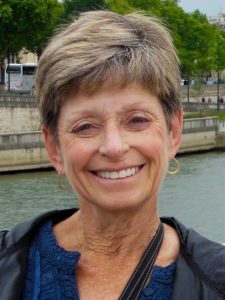
Sometimes we wake up to find our lives racing down a path we haven’t chosen. In March 2014, I opened my eyes to discover Michael, my husband, sitting on our bed unable to speak. The challenges that ensued became the topic for a personal essay I wrote, called, “The Event: Two Perspectives.”
Through the process of writing, revising over time, and finally publishing the essay in July 2017, I learned a number of valuable lessons.
1. Allow time to walk away from emotionally charged writing before declaring it ready for others to see.
I began “The Event: Two Perspectives” soon after my husband suffered his stroke. In many ways, I think the writing process served as therapy, a way to work through my doubts and fears. Although I wrote a number of drafts before declaring the piece “ready-to-go,” I hadn’t allowed enough time to pass between our initial trauma and my decision to submit my essay for publication. After several rejections, I was discouraged and shelved my story until I felt better equipped to deal with such challenging subject matter.
2. Focus on the writing process and not how others might react when reading what you’ve written.
After a year passed, I revisited my essay. At the time, even the title was different, “Perimeters of Love.” I remember thinking the title didn’t work, and I’d included too many paragraphs explaining what I felt instead of showing readers. I also decided I’d provided unnecessary back-story, sharing information that didn’t contribute to the narrative.
I made revisions and then posted the new draft while participating in an online class. After receiving comments on the draft, I made more changes and continued to do so until I felt at peace with what I’d written. Still, I made no move to submit my new “final” draft; something seemed to be missing.
While workshopping my piece, I posted about my progress in the writing community and discussed my hesitancy to submit my latest effort. The members in my group and Jenna, during conference calls, supported my decision to sit with my revised draft longer.
At some point, I recognized that an important part of the story was missing, Michael’s perspective. After all, he’d been impacted most. If I was to share an authentic retelling, we both needed to be heard. Michael agreed to an interview, and I used what he shared to write the second part of my essay, his “Silent Monologue.”
3. Researching where to submit a piece takes a lot of time and emotional energy.
Having researched journals I thought were appropriate venues for this piece once, I was reluctant to initiate that process again. I was working on other stories and felt this was not a good time to move my focus from writing to submitting.
Someone in the writing community mentioned Writer’s Relief, a service that researches venue options for authors and even helps to polish query letters. I decided to pay for their expertise. While I experienced a few glitches, I found them to be responsive when I had questions and easy to work with. They read my essay, sent me a list of twenty-five journals they felt were a good fit along with names of editors, their submission requirements, and other pertinent information.
While I still had to send out my piece, I felt I was using my time wisely, targeting journals that might be better alternatives for my writing.
4. Navigating the acceptance/rejection process presents its own challenges.
After skimming submission guidelines for the journals suggested by Writer’s Relief, I found twenty-two to pursue. I earmarked several days to spend submitting and then waited to see what would happen.
The first seven responses were rejections, but two were what I call “good rejections.” Those journals took time to critique my piece and encouraged me to submit to them again. The editors explained, however, that they disagreed with my decision to include Michael’s perspective and would not be publishing this piece.
I began to question my vision. I shared my doubts with Jenna and my group members in the writing community. They reminded me that this story was mine and suggested that I give myself more time before making any changes. In the end, “The Event: Two Perspectives” found a home. I won’t ever forget how thrilled I was to read “Congratulations” in their email’s first line rather than “I’m sorry.”
Thinking back, next time I submit a story, I may prioritize the list of venues and then stagger my submissions. That way, I’ll have better control over where my work is published.
5. Publishing online was uniquely satisfying.
While I had published in print before, this was my first piece published online. Although having a magazine or journal to hold in my hand was exciting, I realized that more people read my online piece because it was more readily available. All a reader had to do was access the site, and my article appeared. Since my goal for a published piece was to reach as many readers as possible, the online venue was a great option.
6. The replies and comments made in response to my piece reaffirmed my feeling that others would find the topic compelling and that sharing our story was a worthwhile undertaking.
While not everybody who responded to The Event had the same reaction, they felt the need to share what they thought. Most said the topic was difficult for them but appreciated making the journey with Michael and me.
Overall, it was gratifying to hear from readers and have an exchange with them. I was amazed at how many old friends learned about my essay through social media and reached out to share their responses. It was a moving and validating experience because, finally, friends and family who knew I wrote had an opportunity to read something that was mine.

Read “The Event: Two Perspectives”
“The Event: Two Perspectives” is a personal essay written in the aftermath of Janis’s husband Michael’s stroke. The story centers on the first few hours of his “event,” from the time he realizes what is happening to the moment he is airlifted to a University hospital center. The piece is told in two perspectives, Janis’s in the first section, titled “The Storm,” and Michael’s in the second half, called “Silent Monologue.”

About Janis
 Janis Brams has been published in the High Desert California Writers Club Anthology, The California Writers Club Literary Review, Plymouth Writers Group, and a community magazine entitled View.
Janis Brams has been published in the High Desert California Writers Club Anthology, The California Writers Club Literary Review, Plymouth Writers Group, and a community magazine entitled View.
Janis holds two master’s degrees, one in Education from the University of Pennsylvania and one in Writing Composition from CSU San Bernardino.
Janis is an educator, having taught students of all ages for over 25 years. Now retired, she enjoys running, yoga, hiking, travel, spending time with her grandkids, and cooking. She founded a book club in her community that has been meeting for over forty years.
Find Janis’s other work here:
- High Desert California Writers Club Anthologies:
- The California Writers Club Literary Review, Winter 2012-2013, http://calwriters.org/
- Plymouth Writers Group, Anthology for Teachers’ Writing: Lost and Found, Fall, 2003 and Acts of Emancipation, Fall, 2005

* This is an affiliate link, which means Called to Write receives a small commission from any purchases you make using this link, and which we deeply appreciate.

by Jenna | Aug 2, 2017 | Guest Posts
It's time for another installment of our "Author Insights" series. In this series, I'm introducing you to writers who've taken their writing all the way to the finish line of publication, and they share their "lessons learned" with you. There's nothing quite like learning from a writer who has made to the other side.
Plus, if you leave a comment at the end of this post before Sunday, August 6th at 11:59 p.m. Pacific Time, you'll be entered to win an autographed copy of the author's book in a random drawing. Please note that you must be located in the United States to win.
Meet Barbara Jacksha, author of Vision Pages: a vision journal for imagining your dreams to life
I'm thrilled to introduce you to Barbara Jacksha. Barbara has been a member of my online writing community since 2014, and is a literary fiction writer. She came to the idea for creating her vision pages journal through writing daily morning pages, and shared her vision pages ideas with the rest of us on our writing community forum. Her idea then took on a life of its own, becoming a tool she could share with other writers.
I asked Barbara to share her insights about writing and self-publishing this book with us.

Barbara Jacksha on Journeying With Our Writing
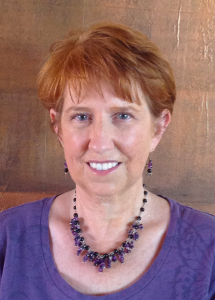 Most of us have a sense of our writing dreams. We think we know where they will take us. But often, our writing dreams will pull us in unexpected, remarkable directions.
Most of us have a sense of our writing dreams. We think we know where they will take us. But often, our writing dreams will pull us in unexpected, remarkable directions.
For years I wrote morning pages, filled journal after journal with wonderful observations, silly ramblings, and I must admit, a lot of complaining. One morning while writing about something that had gone wrong, I stopped. Why was I giving so much attention to what I didn’t want? Why energize that? What would happen if I only wrote about what I did want? That’s when my daily practice shifted to writing what I call vision pages: writing about what I want to have, do, be, and experience.
I loved it. I found the writing energizing, empowering, effective, and just plain fun. I told a few people what I was doing and got great feedback. That gave me the idea to create journals that would teach people how to write vision pages and give them space to play with their own dreams and visions.
I’d never created a journal before, so this was brand new territory. I felt intimidated, uncertain, a bit terrified, but also insanely curious and eager to take off on this unexpected journey. As I wrote and designed the journals, I learned a lot about myself and about following my writing dreams.
Here are some of the insights I came to on my journey to creating the journal:
#1 Value what YOU have to say.
When I first realized that people were interested in vision pages, I was surprised. Apparently, a part of me believed that my ideas couldn’t be valuable to others. That belief is simply not true--for me or anyone else. We all have much to contribute, as people, as writers, and to share what only we can say is one of our biggest gifts to the world. Our dreams and inner visions tell us what we need to share. We just need to listen!
#2 Be open to the fresh and unexpected.
I never thought I’d create a journal. I never thought I’d create YouTube videos of my work, but that’s also on my to-do list. Following our writing dreams often means venturing into new territory, in what we write about and how we get our work out to the world. There are many fresh and interesting possibilities available to us now, and they seem to be expanding daily. Don’t hesitate to open a new door. Once you do, you may find that many others open to you as well.
#3 Keep learning new things.
To create these journals, I polished rusty Photoshop skills and learned Adobe Illustrator and Adobe InDesign from scratch. Climbing that steep learning curve took patience and time, but now I have new skills I can apply any way I choose. Don’t let the need to learn something new stop you. Learning is always worth what you invest in it.
#4 Mine the wealth of your own experiences and let it support your writing.
Sometimes the idea of heading off in a new direction feels like you’re starting from scratch. But are you? In creating these journals, I called on skills I developed many years ago when I was a freelance business writer. What skills do you have in other areas of your life that can and do support your writing? Organization? Time management? Presenting to others? If we recognize the wealth of our own experiences, it can take the pressure off and help us see just how capable and prepared we already are.
#5 Relax and have fun.
Trying new things can be frustrating. We can get impatient or discouraged. One of the assignments I gave myself while creating these journals was to keep the process as relaxed and light as I could. When we relax, it’s easier to let our inner visions and knowing guide us. We’re also better able to let things in: new ideas, perceptions, information, solutions, you name it. As often as you can, let your writing be playful and relaxed. Let it be an exploration and adventure. I was amazed at the difference this makes, and I’m sure you will be too.
Maybe it’s time to have a cup of tea with your writing dreams and see where they’d love to take you next!
About Vision Pages
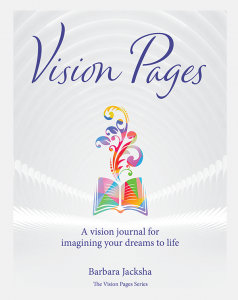 Manifest your dreams using the power of imagination! Vision Pages takes journaling to the next level. When you write vision pages, you focus on what you desire to have, feel, be, and experience. It's like creating a vision board, but instead of relying on other people's words and images, you create with your own hand, using your own words, and write from your own inner wisdom and heart. Writing vision pages is both an immersive experience and a fun, empowering process that can bring about wonderful changes in you and your life. The Vision Pages journal briefly describes the four key steps to writing vision pages and imagining your dreams to life. The rest of the book is yours to fill with your life-changing visions.
Manifest your dreams using the power of imagination! Vision Pages takes journaling to the next level. When you write vision pages, you focus on what you desire to have, feel, be, and experience. It's like creating a vision board, but instead of relying on other people's words and images, you create with your own hand, using your own words, and write from your own inner wisdom and heart. Writing vision pages is both an immersive experience and a fun, empowering process that can bring about wonderful changes in you and your life. The Vision Pages journal briefly describes the four key steps to writing vision pages and imagining your dreams to life. The rest of the book is yours to fill with your life-changing visions.
Pick up your copy of Vision Pages on Amazon here (affiliate links*):
About Barbara
 Barbara Jacksha is a writer and spiritual explorer. Her work centers around liberating and living our inner truth and bringing more magic into our lives. Barbara’s short work has appeared in a variety of publications including the W.W. Norton anthology Flash Fiction Forward. She was an editor at flashquake and an editor and co-founder of the spiritual literary journal Cezanne’s Carrot. Barbara lives in the wilds near Santa Fe, New Mexico, with her husband, three dogs, and several neighborhood coyotes. To see what else she’s up to, you can visit her website: www.barbarajacksha.com
Barbara Jacksha is a writer and spiritual explorer. Her work centers around liberating and living our inner truth and bringing more magic into our lives. Barbara’s short work has appeared in a variety of publications including the W.W. Norton anthology Flash Fiction Forward. She was an editor at flashquake and an editor and co-founder of the spiritual literary journal Cezanne’s Carrot. Barbara lives in the wilds near Santa Fe, New Mexico, with her husband, three dogs, and several neighborhood coyotes. To see what else she’s up to, you can visit her website: www.barbarajacksha.com

* This is an affiliate link, which means my Called to Write business receives a small commission from any purchases you make using this link, and which I deeply appreciate.

by Jenna | May 9, 2017 | Guest Posts
And we're back! It's time for the next installment of our "Author Insights" series. In this series, I'm introducing you to writers who've taken their writing all the way to the finish line of publication, and they share their "lessons learned" with you. There's nothing quite like learning from a writer who has made to the other side.
Plus, if you leave a comment at the end of the post before Friday, May 12th at 5 p.m. Pacific Time, you'll be entered to win an autographed copy of the author's book in a random drawing. Please note that you must be located in the United States to win.
Meet Elaine La Joie, author of The Empath as Archetype
I'm thrilled to introduce you to Elaine La Joie. Elaine and I have worked together in various ways over the past 15 years since we first met after attending the same coach training program. Elaine has gone on to become not only a coach but is now also a shaman, who specializes in working with empaths. Elaine has chosen the self-publishing path and has put out five books, now bundled into one in the The Empath as Archetype. Her books are particularly valuable for sensitives and empaths who find themselves stuck in challenging relationship situations. Being a shaman and an expert in the Enneagram Four, Elaine always brings a higher view of relationship interactions I find illuminating and freeing.
I asked Elaine to share her insights about writing her books with us.

Elaine La Joie on Writing The Empath as Archetype

I had wanted to write ever since I was a child, but I always thought I’d write fiction. However, after coaching empaths for a few years I found myself writing non-fiction.
At first I wrote short essays for my blog about topics that came up during client sessions that I thought most empaths would appreciate.
Then, as I expanded my knowledge base from plain coaching to the Enneagram to shamanic energy work, I found myself explaining these concepts to new clients, which took too much time away from diving into the healing work, so I decided to write a guide that clients could read before they started working with me.
Structuring a Complicated, Massive Topic
However, the book I imagined was complicated. I was bringing together topics from the Enneagram, shamanic energy work, and archetypes, and then writing specifically for the empath archetype. It was overwhelming.
Instead of writing I found myself spending time thinking about how to arrange this massive treatise, which led to frustration and procrastination. I solved this by going back to observing my clients and what we needed to unravel and work on first before major progress could be made.
This helped me see the three disparate topics my clients needed to understand before they could achieve deep healing and shift their ingrained patterns, and I organized my work accordingly. I wrote three books about the archetypal drama triangle, which is particularly problematic for the sensitive empath, shamanic energy work, and the enneagram archetype of the empath. I published these on my website.
Navigating Expanding My Reach with Amazon
Once I had self-published the books on my site, I had a few sales, mostly from new clients and others curious about my work. The feedback was good, but small. I kept writing, this time shifting to major case studies with the assumption that the reader had absorbed the concepts in the first three little books.
Because I wanted to expand my reach, I started looking into how to upload my books to Amazon. Luckily by the time I was ready to publish on Amazon, they had made the process relatively straightforward and free with both their digital system (Kindle) and their softcover publisher (CreateSpace).
But I noticed that I was procrastinating again—the thought of having my books reviewed by the general public was for the most part scary and unappealing.
Making Peace With the Possibility of Bad Reviews
My books were written for a very specific audience, an empath who wants to change his or her life. A non-empath would not understand these books. An empath that was interested but not ready to look at the shadow work required to heal themselves would most definitely find my books upsetting. They might leave rotten reviews. In many ways I felt like I was setting myself up to be misunderstood and misrepresented.
At the same time, I knew this work would be helpful to that segment of the population of empaths who were ready to dive in and do the deep healing work.
So, I had to prepare to get bad reviews. I made two shifts with my thinking that helped tremendously:
- I made a conscious decision not to take any reviews personally and to trust the work would reach the audience for whom it was intended. Because I am an empath, and empaths tend to take everything personally, I had to remind myself that my feelings in the moment would pass; I should honor my feelings, but not take them too seriously, even the happy feelings around good reviews. This helped me be both less attached to good reviews and less fearful of bad reviews.
- I reminded myself that personal work for anyone is very difficult, and that it is a common human behavior to shoot the messenger. My work is all about being the messenger for people who are hurting and wanting to heal themselves. In doing one-on-one work with clients, it is relatively easy to match my client and maintain a relationship that works for both of us, but every once in a while a client tries to shoot the messenger. It doesn't happen often because we have built up a relationship of acceptance and trust, but when it does, I don't take it personally because I understand the nature of healing work and the role of the shaman. Once I started thinking of my writing as working one-on-one with my favorite clients as my audience, it was easier and less scary to move forward. However, because I wasn’t really working one-on-one with each reader, it was guaranteed that I would be shot down at least one time out of ten.
Luckily for me, most of my readers so far have wanted to do the work, so most of my reviews on Amazon have been very good. Many empaths can be shy, so I receive much more positive feedback through emails than through reviews, which is also heartening. There are awful reviews as well, such as one from a reader who gave my last book one star after starting with it first instead of last. This person did not to read the other books, but gave them all one star reviews anyway. This was both amusing and upsetting at the same time, but in the grand scheme of things, the work is out there, and people can take it or leave it, just as they take or leave one-on-one session work.
Overall my writing experience has been a very good one. I have been very lucky to have a niche in which to write. I also entered self-publishing right when the process became easy and straight forward.
As it turned out, the literal process of self-publishing was easy—the hardest step was moving past my fears and putting the work out there.
About The Empath as Archetype
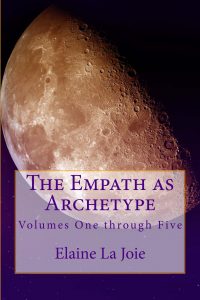 The Empath as Archetype contains the first five volumes of The Empath as Archetype series by Elaine La Joie, including:
The Empath as Archetype contains the first five volumes of The Empath as Archetype series by Elaine La Joie, including:
- The Empath and the Archetypal Drama Triangle
- The Empath and Shamanic Energy Work
- Motivations of the Empath
- The Empath and Shadow Work
- The Empath and the Fan-Hero Family System
These books, written over seven years, are a compilation of case studies of Elaine's clients, and are now available in this collected edition.
Elaine begins with the Archetypal Drama Triangle, explaining the most common archetypal system humans can be caught in, but gives examples particular to empaths. She moves on to describing shamanic techniques including Soul Retrieval and Underworld Work, used in her practice to help her clients heal wounds common to empaths. Next comes a description of the most typical blindspots and faulty beliefs for empaths as described by the Enneagram Type Four and how to change to more productive beliefs and behaviors. In the final two volumes she explains particularly troublesome relationships in which empaths can become entangled, including the common family system that can produce the narcissistic personality.
The Empath as Archetype is available on Amazon.com.*
About Elaine
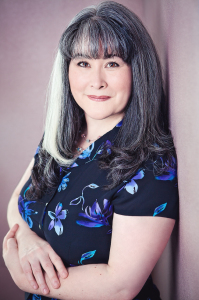 Elaine La Joie, shaman and certified life coach, has worked with empaths and highly sensitive intuitives for more than ten years. During that time she has helped empaths understand themselves and their relationships while using shamanic energy healing to resolve past traumas, including severe abuse. These books offer empaths insight into their relationship and into the hidden motivations of themselves and others so that they can understand their loved ones and create the lives they truly desire.
Elaine La Joie, shaman and certified life coach, has worked with empaths and highly sensitive intuitives for more than ten years. During that time she has helped empaths understand themselves and their relationships while using shamanic energy healing to resolve past traumas, including severe abuse. These books offer empaths insight into their relationship and into the hidden motivations of themselves and others so that they can understand their loved ones and create the lives they truly desire.
Please visit Elaine’s website at https://secure.clearreflectioncoaching.com for more resources for empaths.

Enter to Win an Autographed Copy of The Empath as Archetype
Elaine has graciously offered to give away three autographed copies of her book to my readers. Leave a comment on the blog about one of your own writing lessons or something you learned from Elaine's insights before Friday, May 12th at 5 p.m. Pacific Time and you'll be entered in the random drawing. Please note, you must be located in the United States to win.
* This is an affiliate link, which means my Called to Write business receives a small commission from any purchases you make using this link, and which I deeply appreciate.
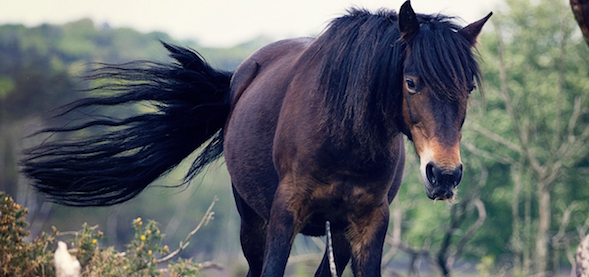
by Jenna | Apr 11, 2017 | Guest Posts
And we're back! It's time for the next installment of our "Author Insights" series. In this series, I'm introducing you to writers who've taken their writing all the way to the finish line of publication, and they share their "lessons learned" with you. There's nothing quite like learning from a writer who has made to the other side.
Plus, if you leave a comment at the end of the post before Friday, April 14th at 5 p.m. Pacific Time, you'll be entered to win an ebook copy of the author's book in a random drawing.
Meet Angela Dunning, author of The Horse Leads the Way
I'm so happy to introduce you to Angela Dunning. Angela was one of my earliest coaching clients. I loved working with her to help her get in touch with her core, essential self and discover her life purpose and calling to work with horses. She was an ideal client, putting in the effort and earning the results we arrived at... and it was a memorable, magical moment when we lit upon Equine Facilitated Learning (EFL) as her career direction. Since then, it's been a true delight for me to watch her career evolve and thrilling to see her publishing her book in her area of expertise. Honestly, words can't convey the excitement I feel seeing Angela bring our work to this level of fruition all these years later.
I asked Angela to share her insights about writing her book with us.

Angela Dunning on 7 Lessons Learned While Writing The Horse Leads the Way
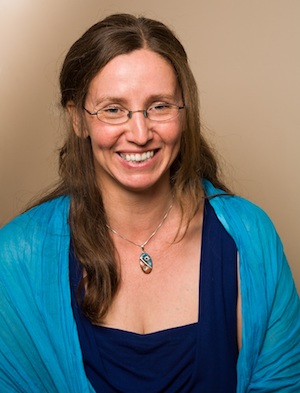 Writing my first ever book, a non-fiction handbook for my profession of equine facilitated practice, was one of the hardest and most challenging things I have ever done. I had no idea just what exactly was involved in creating and structuring an entire book. Having written articles and blog posts for many years now I found writing a book to be a whole different ballgame.
Writing my first ever book, a non-fiction handbook for my profession of equine facilitated practice, was one of the hardest and most challenging things I have ever done. I had no idea just what exactly was involved in creating and structuring an entire book. Having written articles and blog posts for many years now I found writing a book to be a whole different ballgame.
On top of this, the book’s focus was somewhat of a challenge for the industry it is aimed at, as I was attempting to question some current areas of practice and training, as well as hoping it would steer the profession back to a more horse-centered methodology. Gulp!
Many, many times I wanted to quit. It was too scary. Too hard. Too much work. And most of all, it took SO much longer than I had originally envisaged to really pummel and kneed the content into shape in a way that would be more palatable to the readers; not cause me too much trouble, and make it as easy and enjoyable a read as possible. On top of all of this, I had an unseen force pushing me on throughout. Maybe it was my Higher-Self/Soul, maybe it was also the horses themselves urging me on to express their concerns and needs, but something kept me going and would not let me quit. Whew…
So, here are my tips, having actually managed to successfully come out the other side of publication. I hope these tips will help and encourage other first-time writers, as I really felt this need myself as a first time writer. It was often a lonely and scary experience and hearing other writers’ experiences was both comforting and encouraging.
- Don’t underestimate how long the editing process takes. I found I did the initial main write in the first 6 months -- and this was a complete joy by the way! However, it then took a further 14 months of nothing but editing, restructuring, and proof-reading over and over again to complete the book.
- Avoid giving yourself arbitrary timescales for completion and publication. My biggest error all along was hoping it would be completed much sooner than it actually was. I had already begun talking openly in my networks about the book and its themes with some enticing social media marketing posts. But as the months wore on I had no energy to continue these as all my time and energy was taken up with the editing process. These arbitrary deadlines I kept giving myself in the end just caused me a ton of unnecessary stress and repeated disappointment. Now that I have a more realistic idea of how long it takes I wouldn’t even mention publication, book-launches and the like, until much nearer the end of the editing process.
- Find yourself a really good editor. Someone who can be completely impartial yet who can also understand your subject matter. Ideally this is someone who can see the bigger picture and help with structure, logic, and readability. If they also do an excellent job of proof-reading and technical editing, then great. If not, then find yourself a great proof-reader too. My advice would be to tackle the structure first, once you’ve got the bulk of your material written. Finalize the structure and flow, and only then move on to the proof-reading and final tidying-up phase.
- Don’t underestimate the amount of energy and commitment it takes to complete a book. It is a marathon and can be gut-wrenching a times. Many times you will want to quit, put it aside, do it another time. Having great support throughout this process is vital. You need friends and family to listen and empathize with you. And you also need really supportive cheer-leaders who you can go to when you feel low, and who will remind you why you are doing it and why your book is important.
- Treating the experience like it was my full-time job was vital, from the very beginning of sitting down to write the content right through to the grueling final months of editing and more editing. Making this commitment to myself and my life to finish the book was crucial. I let go of other assignments and greatly reduced my other commitments so that I could do this. For me personally, and for my mental wellbeing, this was essential to enable me to stay focused and committed to the end product and its purpose.
- Many people say this is like a birthing process. I absolutely agree with this analogy. The labor-pains I endured, which went on for MONTHS, were at times excruciating. Don’t underestimate just what it takes on all levels to write and publish a book. It takes self-care, nurturance of each part of the project, support from others, and ideally, a skilled publisher to hold your hand through those final, painstakingly slow weeks of design, further editing and layout before you even receive a hard-copy in your hands. The post-birth relief once it is finally out there though is immense and very much welcomed.
- Finally, I would also like to say that I have learned the post-publication period is a very important time for great self-care. Personally, I was exhausted and also a little down during this time. Suddenly I had nothing to focus on each day in such a concentrated way. There was an odd sense of emptiness permeating my days following publication. Coupled with a strange silence as the book made its way onto its readers’ bookshelves and into their hands. I had to now just sit back and wait for feedback and income.
Being gentle with yourself in this period is vital. It is not all champagne corks and celebratory dinners, although these are great, of course. It is also a vital period for rest, recuperation, and time to reflect on the intense process you have just been through, and perhaps put your nearest and dearest through too. Be gentle, rest, and allow yourself to sink into the enormity of what you HAVE accomplished. It is not for the faint-hearted! Writing a book takes courage, faith, and guts. And it changes how you see yourself and also how others see you too. A lot is shifting occurs as a result of becoming an author in addition to the actual material you have produced and this takes time to adjust to and integrate.
About The Horse Leads the Way
 The Horse Leads the Way undertakes a timely review of the rapidly growing profession of Equine Facilitated Practice (encompassing Learning, Coaching Therapy, and Psychotherapy but not therapeutic ridden interventions).
The Horse Leads the Way undertakes a timely review of the rapidly growing profession of Equine Facilitated Practice (encompassing Learning, Coaching Therapy, and Psychotherapy but not therapeutic ridden interventions).
Part handbook, part personal story, the author blends embodied, grounded techniques and compassionate insights to gently guide this method back to its greatest teachers: the horses themselves. Using an approach which is firmly grounded in the view of the horses as sentient beings in their own right, Angela guides practitioners and training providers to employ methods which honor this right throughout all areas of their work. Not only does this protect and support their equine partners’ wellbeing and enjoyment of their work, but, she argues, it also brings maximum benefit to the participants as a natural consequence. It is hoped the book will mark an important turning in this blossoming industry’s future development.
The Horse Leads the Way is available on:
About Angela

Angela Dunning is a sensitive, intuitive horsewoman. She is also a healer, teacher, writer, community worker and consummate holder of sacred space. A graduate of Eponaquest® Worldwide and LEAP, she established her Equine Facilitated Learning (EFL) practice, Equine Reflections, in 2007. She delivers private sessions, talks, workshops, taster sessions, supervision, mentoring, and training. She specializes in supporting women through navigating their own personal growth, reconnecting to their bodies, and reclaiming their true essence. Angela lives in Herefordshire, England and delivers her work in the UK and abroad by invitation.
You can find Angela online at thehorsestruth.co.uk.

by Jenna | Mar 21, 2017 | Guest Posts
And we're back! It's time for the next installment of our "Author Insights" series. In this series, I'm introducing you to writers who've taken their writing all the way to the finish line of publication, and they share their "lessons learned" with you. There's nothing quite like learning from a writer who has made to the other side.
Plus, if you leave a comment at the end of the post before Friday, March 24th at 5 p.m. Pacific Time, you'll be entered to win an autographed copy of the author's book in a random drawing. (IMPORTANT: You must be located in the United States to win.)
Meet Mary Montanye, author of Above Tree Line
I'm thrilled to introduce you to Mary Montanye. Mary joined my writing community at the beginning of 2013 in order to finish the memoir she'd been working on for five years before she joined us. She's now tackling her next big writing dream with the help of the writing community: Writing a romantic suspense novel. Mary quickly became a staunch advocate for the approach we use in the writing community and joined the team as a coach after participating as a member of the writing community for about a year and a half.
I asked Mary to share her insights about writing her memoir with us.

Mary Montanye on 5 Lessons Learned in Writing Above Tree Line
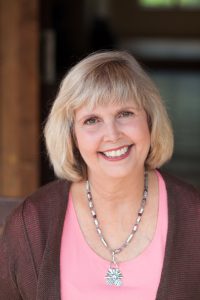
My memoir, Above Tree Line, took seven years to write and publish. During that time, I made a lot of mistakes. Here's what I learned and how I’d do it differently now.
1. Find support early in the process, but don’t let that support stop you from completing the project so you can move on to others.
I worked with a brilliant writer and teacher for much of the writing of Above Tree Line. I learned a great deal from her and will always be grateful for the time I spent as her student. But eventually I realized that somewhere in my work with her I’d become stuck. We were spending all our time together going over and over the same material — changing, tweaking, finessing. I began to wonder if my resistance to publishing and her desire to keep me as a student, might be getting in the way. I ended our working relationship and joined Jenna's writing community instead. I completed my memoir within a couple of sessions and moved into the publishing stage.
2. Don’t start at the beginning when writing a memoir. (This might be true for other types of writing as well. I’ll let you know when I finish the novel!)
Start anywhere you feel the heat — a memory, a taste, a color, an image, a sensation, a fragrance. Write from there. “She was born on August 16th at such and such hospital in Honolulu, Hawaii…” will bore you and make it more difficult to continue. Your reader won’t like it either. So why bother?
Let the first draft be all over the place. Let it be messy, filled with what was powerful and exciting for you. Ask yourself what interests you about your history or your family. Put it all in, even those parts you know you’ll never let stand. This draft is not the time to censor yourself. If you worry about what your readers will think, you might find you’ve left the gold in the ground and can’t remember where it was when you want to dig it up later.
3. Recognize fear and resistance for what it is — just fear and resistance. It doesn’t mean that you’re not a writer or that it is time to quit.
Fear and resistance got the best of me during the writing stage because I was not separating the creating of a project from the publishing or marketing of it. If I was in the middle of writing about a painful period of my childhood, for instance, and suddenly flashed on the idea that someday someone, perhaps even someone I knew and loved, would be reading it, I froze. I also stopped myself from writing when I’d compare my writing to that of others or when I read posts about the impossibility of publishing in the current marketplace. My coach and fellow writers in the writing community gently guided me back to what was in my power to do: write. Write the best story I could write now, they urged, and leave the rest for later.
4. When you share your writing other than with friends and family, it’s a pretty safe bet that someone won’t like it, that you will get rejections or negative reviews.
I was devastated when a woman who reviewed my memoir for a contest said that, even though the writing was good, she didn’t like either me or my husband. She was a stranger and still it hurt that she didn’t like me and that I’d portrayed my husband as unlikeable as well, at least in her eyes. I made this one review more important than it was — even more important than the complimentary reviews I’d received. A negative review almost stopped me from ever sharing my writing with anyone again.
The lesson in this for me, and I hope for you, is that if you write honestly, if you allow yourself to be vulnerable on the page, you will affect people. And that’s what we want, right? It’s okay if some of our readers don’t approve, like the writing, or even us. Feel your feelings about the review. The writing community and my coach helped me with this, too. They shared my pain and helped me to put it aside, to continue on.
5. Keep at it. If you have a desire to write, you are meant to write. Jenna would say you have a calling, and we both believe that callings are meant to be followed.
When I held my published memoir in my hands, felt the weight of it, and flipped through its pages, it was one of the greatest days of my life. I was so proud. I wish you the same experience. No matter where you are in your writing, no matter how unsure you may feel, keep going. Get help if you need it, but whatever you do, don’t give up. It is so worth it!
About Above Tree Line
 From Amazon.com: "The traumas and losses of childhood are often buried. The child grows up appearing normal, unscathed and perhaps even successful. But often what is buried comes back to attack at the very moment when life is reaching its pinnacle. This is the story of one woman’s spiral downward into physical and mental breakdown and her return to wholeness by courageously, and some would say recklessly, following her intuition. Ms. Montanye’s intuition leads her to a tiny town in a Colorado canyon alongside the wild and scenic Cache La Poudre River. There, she immerses herself in the grandeur and beauty of the surrounding mountains. When her journey begins, no one involved can know that it will lead to such a powerful and bittersweet end: an end that includes healing for herself, her marriage and for the difficult relationship she endured with her mother."
From Amazon.com: "The traumas and losses of childhood are often buried. The child grows up appearing normal, unscathed and perhaps even successful. But often what is buried comes back to attack at the very moment when life is reaching its pinnacle. This is the story of one woman’s spiral downward into physical and mental breakdown and her return to wholeness by courageously, and some would say recklessly, following her intuition. Ms. Montanye’s intuition leads her to a tiny town in a Colorado canyon alongside the wild and scenic Cache La Poudre River. There, she immerses herself in the grandeur and beauty of the surrounding mountains. When her journey begins, no one involved can know that it will lead to such a powerful and bittersweet end: an end that includes healing for herself, her marriage and for the difficult relationship she endured with her mother."
Above Tree Line is available on:
About Mary
 Mary Montanye lives on the central Oregon Coast where she gratefully writes and coaches while often resting her eyes on the beauty of the natural world that surrounds them. Mary has a master's degree in clinical social work from the University of Iowa and counseled individuals and families through nonprofit agencies and her own private practice for many years before retiring and following her dream to write.
Mary Montanye lives on the central Oregon Coast where she gratefully writes and coaches while often resting her eyes on the beauty of the natural world that surrounds them. Mary has a master's degree in clinical social work from the University of Iowa and counseled individuals and families through nonprofit agencies and her own private practice for many years before retiring and following her dream to write.
You can find Mary online at www.marymontanye.com.

by Jenna | Feb 17, 2017 | Guest Posts
And we're back! It's time for the next installment of our "Author Insights" series. In this series, I'm introducing you to writers who've taken their writing all the way to the finish line of publication, and they share their "lessons learned" with you. There's nothing quite like learning from a writer who has made to the other side.
Plus, if you leave a comment at the end of the post before Tuesday, February 21 at 5 p.m. Pacific Time, you'll be entered to win an autographed copy of the author's book in a random drawing. (IMPORTANT: You must be located in the United States to win.)
Meet Terri Fedonczak, author of The Field Guide to Plugged-In Parenting... Even If You Were Raised by Wolves
Let me introduce you to Terri Fedonczak. Terri became a member of my writing community in 2012 in order to finish the parenting book she'd been dreaming about for years... and finished her first draft working in 15 minute increments in her first session with us. She went on to work with an editor and complete rewrites and revisions of the book while in the writing community, and now continues her work in Florida supporting teen girls and their parents.
I asked Terri to share her insights about writing her book with us.

Terri Fedonczak on How Writing a Book Is Like Raising a Child
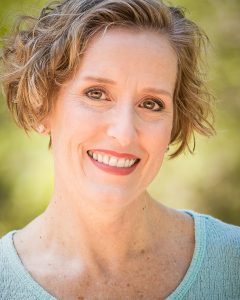
In January of 2014, the culmination of 15 years of thinking about writing a book, one year of putting words on a contiguous collection of pages, and 13 months of rewrites (accomplished in the writing community) came to fruition with the publication of my book-baby, Field Guide to Plugged-In Parenting…Even If You Were Raised By Wolves. And you thought elephants had a long gestation period!
Writing my book was just as painful and rewarding as having and raising my children, but the comparisons don’t stop there:
Four Ways That Writing a Book Is Like Raising a Child
- It takes so friggin’ long to see progress: During the long years of changing diapers, jotting ideas on sticky notes, and leaving the house with dried cereal in my hair, I wondered if all the effort would ever amount to anything. The answer is “Yes!” But it’s not transactional, like buying a latte, unless your local coffee shop makes you grow the beans and grind them by hand before making your drink. Birthing something out of thin air takes time, and a long view. It’s sometimes two steps forward and three steps back, and that’s okay. Remember, you are the creator, not the timekeeper.
- It takes faith: When it doesn’t seem like the structure of the story will ever come together (I wrote a self-help/memoir—how hard can the story BE to define?), it takes faith to keep showing up to the page, or the breakfast table. Kids and manuscripts are ALWAYS there, just waiting to challenge your self-esteem and planning ability. Take three deep breaths, and then take the next step. When it comes to writing that next chapter or potty training, don’t worry about the outcome, just take the next step. Believe me, it’s worth all the effort, and they really won’t go to college in diapers!
- It takes self-care: When you’re facing a marathon of effort, you can’t wait to find time to take care of yourself. No one will do it for you, so you might as well face facts: parenting and writing take a clear mind. You cannot clear your mind without a little quiet time (meditation is my favorite), something green to eat (no, M&M’s don’t count), and some consistent sweat time, preferably outside. The more you can find moments of quiet, the easier it is to hear the small voice inside your heart that tells you, “This moment, right here, is the good stuff.” That sense of gratitude is the best creative fuel ever!
- The worst moments make the best stories: The time my toddler painted her walls with a dirty diaper wasn’t fun, but it made a great story. Having breast cancer wasn’t a carnival, but it changed the way I looked at my priorities. Cancer was the best thing that ever happened to my life, but in the moment, it sucked, big time. Look at whatever trial you are currently experiencing and imagine telling it as a story, surrounded by your favorite people. It makes things easier to handle, and it challenges you to find the humor in the worst of times. I had a Bon Voyage Party for my breast called “Tah-Tah to the Tata”—best party ever!
Anything worth doing is going to take effort, creativity and faith. You COULD put off writing that book for a few years, because you don’t have time, the right computer or the most ideal software. But you will only be a few years down the road without anything to show for your perfection based avoidance. Or you could join the writing community, Apply Butt to Chair for 15 minutes a day, 4 to 5 times per week, and crank out a good story. That’s what I did, and I’m still grateful!
About The Field Guide to Plugged-In Parenting... Even If You Were Raised by Wolves
 The Washington Post endorsed The Field Guide to Plugged-In Parenting... Even If You Were Raised by Wolves in their Parenting Book Round Up, and Jill Farmer, author of There’s Not Enough Time...and Other Lies We Tell Ourselves, says, "This book helps us acknowledge and heal from wounds in our childhood, then it beautifully guides us to parent in a much healthier way. Terri Fedonczak doesn’t shy away from the tough topics, but she manages to keep the tone light and enlightening at the same time. It’s a must-read for any parent!
The Washington Post endorsed The Field Guide to Plugged-In Parenting... Even If You Were Raised by Wolves in their Parenting Book Round Up, and Jill Farmer, author of There’s Not Enough Time...and Other Lies We Tell Ourselves, says, "This book helps us acknowledge and heal from wounds in our childhood, then it beautifully guides us to parent in a much healthier way. Terri Fedonczak doesn’t shy away from the tough topics, but she manages to keep the tone light and enlightening at the same time. It’s a must-read for any parent!
The Field Guide to Plugged-In Parenting... Even If You Were Raised by Wolves is available on:
About Terri
 Terri Fedonczak wants to live in a world where girls recognize their own power and choose to use it for good. On a trip to South Africa, Terri had a lightning bolt of realization that her mission is to bring the power of the lioness' pride to girls and their parents. Terri was a commercial real estate agent for 16 years until a bout with breast cancer transformed her life in 2010. She realized that trading money and status for time with her four girls and patient husband was not quite the deal she thought it once was. She left sales to become a certified life coach and embark upon a journey of spreading the message of girl power far and wide.
Terri Fedonczak wants to live in a world where girls recognize their own power and choose to use it for good. On a trip to South Africa, Terri had a lightning bolt of realization that her mission is to bring the power of the lioness' pride to girls and their parents. Terri was a commercial real estate agent for 16 years until a bout with breast cancer transformed her life in 2010. She realized that trading money and status for time with her four girls and patient husband was not quite the deal she thought it once was. She left sales to become a certified life coach and embark upon a journey of spreading the message of girl power far and wide.
You can discover your own inner lioness and feel the power of the pride at www.girlpowerforgood.com.
Read other guest posts by Terri here and here.

![]()

 Janis Brams has been published in the High Desert California Writers Club Anthology, The California Writers Club Literary Review, Plymouth Writers Group, and a community magazine entitled View.
Janis Brams has been published in the High Desert California Writers Club Anthology, The California Writers Club Literary Review, Plymouth Writers Group, and a community magazine entitled View.![]()


 Most of us have a sense of our writing dreams. We think we know where they will take us. But often, our writing dreams will pull us in unexpected, remarkable directions.
Most of us have a sense of our writing dreams. We think we know where they will take us. But often, our writing dreams will pull us in unexpected, remarkable directions.



 Elaine La Joie, shaman and certified life coach, has worked with empaths and highly sensitive intuitives for more than ten years. During that time she has helped empaths understand themselves and their relationships while using shamanic energy healing to resolve past traumas, including severe abuse. These books offer empaths insight into their relationship and into the hidden motivations of themselves and others so that they can understand their loved ones and create the lives they truly desire.
Elaine La Joie, shaman and certified life coach, has worked with empaths and highly sensitive intuitives for more than ten years. During that time she has helped empaths understand themselves and their relationships while using shamanic energy healing to resolve past traumas, including severe abuse. These books offer empaths insight into their relationship and into the hidden motivations of themselves and others so that they can understand their loved ones and create the lives they truly desire.
 Writing my first ever book, a non-fiction handbook for my profession of equine facilitated practice, was one of the hardest and most challenging things I have ever done. I had no idea just what exactly was involved in creating and structuring an entire book. Having written articles and blog posts for many years now I found writing a book to be a whole different ballgame.
Writing my first ever book, a non-fiction handbook for my profession of equine facilitated practice, was one of the hardest and most challenging things I have ever done. I had no idea just what exactly was involved in creating and structuring an entire book. Having written articles and blog posts for many years now I found writing a book to be a whole different ballgame.


 From Amazon.com: "The traumas and losses of childhood are often buried. The child grows up appearing normal, unscathed and perhaps even successful. But often what is buried comes back to attack at the very moment when life is reaching its pinnacle. This is the story of one woman’s spiral downward into physical and mental breakdown and her return to wholeness by courageously, and some would say recklessly, following her intuition. Ms. Montanye’s intuition leads her to a tiny town in a Colorado canyon alongside the wild and scenic Cache La Poudre River. There, she immerses herself in the grandeur and beauty of the surrounding mountains. When her journey begins, no one involved can know that it will lead to such a powerful and bittersweet end: an end that includes healing for herself, her marriage and for the difficult relationship she endured with her mother."
From Amazon.com: "The traumas and losses of childhood are often buried. The child grows up appearing normal, unscathed and perhaps even successful. But often what is buried comes back to attack at the very moment when life is reaching its pinnacle. This is the story of one woman’s spiral downward into physical and mental breakdown and her return to wholeness by courageously, and some would say recklessly, following her intuition. Ms. Montanye’s intuition leads her to a tiny town in a Colorado canyon alongside the wild and scenic Cache La Poudre River. There, she immerses herself in the grandeur and beauty of the surrounding mountains. When her journey begins, no one involved can know that it will lead to such a powerful and bittersweet end: an end that includes healing for herself, her marriage and for the difficult relationship she endured with her mother."

 The Washington Post endorsed The Field Guide to Plugged-In Parenting... Even If You Were Raised by Wolves in their
The Washington Post endorsed The Field Guide to Plugged-In Parenting... Even If You Were Raised by Wolves in their